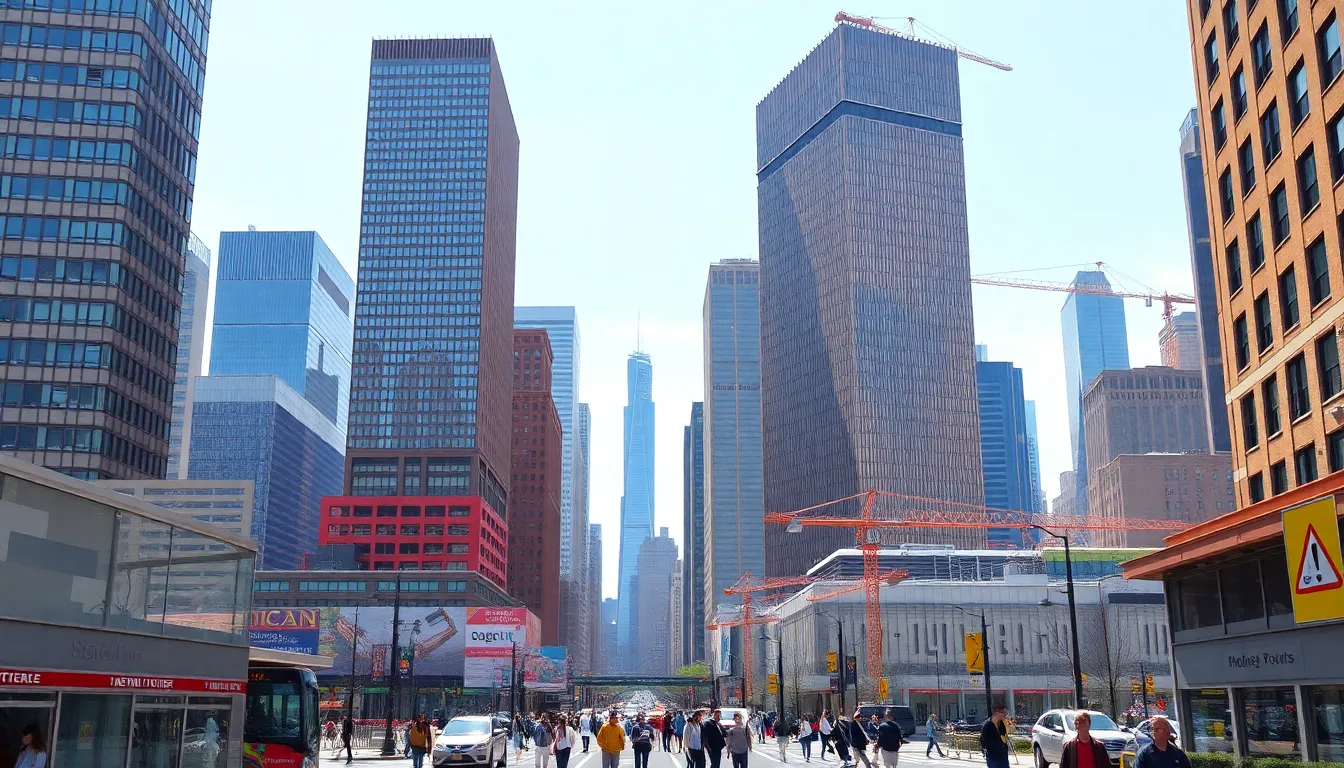Table of Contents
ToggleNew York City’s commercial real estate scene is like a thrilling Broadway show—full of twists turns and a few unexpected plot twists. From soaring skyscrapers to trendy co-working spaces, the landscape is always changing, and keeping up can feel like a full-time job. Whether you’re a seasoned investor or just curious about what’s happening in the Big Apple, the latest news is essential for navigating this bustling market.
As the city bounces back from challenges and embraces new opportunities, the buzz around commercial properties is louder than ever. It’s not just about square footage and lease terms; it’s about the stories behind the buildings and the future they promise. So grab your hard hat and get ready to dive into the latest updates that promise to keep you informed and entertained in the fast-paced world of New York commercial real estate.
Latest Trends in New York Commercial Real Estate
New York’s commercial real estate market shows continual evolution and innovation. Current trends indicate a shift towards flexible workspaces and adaptive reuse of existing properties.
Market Overview
The market reflects an increased demand for mixed-use developments. Investors and developers focus on properties that accommodate both residential and commercial needs. In particular, neighborhoods such as Hudson Yards and the Lower East Side witness significant transformation. The rise in e-commerce prompts a surge in logistics and warehouse space. Tech companies drive the demand for dynamic office environments that foster collaboration and creativity. As NYC grapples with the aftermath of the pandemic, occupancy rates are gradually increasing, signaling a recovery phase.
Key Statistics
Notable statistics highlight the commercial real estate landscape. Manhattan office rental rates stand at an average of $71 per square foot. Retail vacancies in Brooklyn hover around 8.5%, indicating a shift in consumer behavior. Investments in the commercial sector reached $5.6 billion in Q2 2023, a 12% increase compared to Q1 2023. Co-working spaces now account for 10% of total office inventory. Overall, the commercial sector’s adaptability becomes crucial in maintaining momentum and attracting investment.
Major Transactions in the Past Quarter

Recent activity in New York City’s commercial real estate market showcases a mix of noteworthy sales and significant leases, reflecting the city’s resilience and adaptability.
Notable Sales
Several high-profile properties changed hands recently. One of the most notable transactions involved the sale of a landmark office building in Hudson Yards, fetching $300 million. Another significant sale saw a mixed-use property in the Lower East Side sold for $120 million, signaling continued investor interest in thriving neighborhoods. Additionally, a logistics center in Brooklyn traded for $250 million, illustrating the strong demand for warehouse space driven by e-commerce growth. These transactions underscore a robust appetite for prime commercial assets in diverse sectors.
Significant Leases
Leasing activity also displayed vibrancy, with major companies securing space in key locations. A notable lease includes a tech firm signing for 150,000 square feet in Chelsea, reflecting the ongoing trend for collaborative office environments. Another significant deal saw a retail brand lease 10,000 square feet in Brooklyn, demonstrating the area’s appealing commercial landscape. Banks are also active, with one securing a 100,000-square-foot space in Midtown. Such leasing transactions indicate a strong recovery and heightened confidence in the market as businesses adapt to evolving needs.
Impact of Economic Factors
Economic factors significantly shape New York City’s commercial real estate landscape. Fluctuating interest rates and employment rates directly influence market dynamics and investment strategies.
Interest Rates and Financing
Interest rates play a critical role in determining financing costs. When rates increase, borrowing becomes more expensive, potentially limiting investment activity. A slow rise in rates often prompts lenders to tighten mortgage requirements. In contrast, lower interest rates tend to encourage more investors to enter the market. Recent trends indicate that rising rates contributed to a 12% quarter-over-quarter decline in certain financing applications. Investors and developers must stay informed about interest rate movements to make sound financial decisions.
Employment Rates and Demand
Employment rates directly correlate with demand for commercial spaces. As businesses hire, the need for office and retail spaces increases. Recent data indicates a gradual recovery in employment, boosting occupancy rates across New York City. Notably, tech and logistics sectors lead job creation, fueling demand for office and warehouse spaces. Increased consumer confidence also drives retail leasing activity. In neighborhoods like Hudson Yards, an influx of businesses has revitalized local markets, reflecting growing employment opportunities.
Future Predictions for the Market
Predictions for New York City’s commercial real estate market indicate a robust transformation on the horizon. Experts highlight evolving dynamics that will shape future investment strategies.
Expert Opinions
Market analysts emphasize the significance of flexible workspaces as businesses pivot post-pandemic. Increased collaboration in office designs is praised for attracting tenants seeking innovation. Professionals note that tech-driven environments will dominate future leasing trends. Rising interest rates create challenges but spur investors to refine strategies. Investors recognize that adapting to market changes remains crucial for long-term success. Consensus suggests that understanding tenant demands will provide insights into market growth.
Emerging Areas of Growth
Key neighborhoods like Hudson Yards and the Lower East Side exhibit tremendous potential for development. Analysts identify mixed-use projects as leading opportunities for future investment. Logistics facilities are on the rise, driven by e-commerce demands. Brooklyn’s retail sector shows promise, particularly as vacancies hover around 8.5%. Additionally, the tech industry continues to thrive, encouraging the adaptation of traditional office spaces. Emerging trends suggest that revitalizing urban locations will attract both businesses and residents, further enhancing commercial appeal.
Challenges Facing the Industry
The New York commercial real estate market encounters several challenges that affect its evolution and resilience.
Regulatory Changes
Regulations frequently shift, impacting development approval timelines and costs. New zoning laws can limit property options, complicating investment decisions. Compliance with updated codes necessitates additional capital, leading to increased project budgets. Stakeholders must navigate these complexities to ensure adherence with city policies while pursuing growth. Key areas like Hudson Yards are particularly sensitive to these changes, as developers assess zoning incentives against community needs.
Sustainability Concerns
Sustainability issues increasingly influence commercial property decisions. Many investors prioritize eco-friendly practices to meet tenant demands for greener spaces. Energy efficiency upgrades often require upfront investments, but they yield long-term cost savings and attract environmentally-conscious tenants. New York City mandates energy-efficient upgrades for existing buildings, pushing owners to adapt. A shift towards sustainable development reflects broader trends in environmental responsibility; firms achieve competitive advantages by adopting these initiatives. The market’s adaptability to sustainability trends underlines its commitment to future generations and a greener urban landscape.
New York City’s commercial real estate market continues to evolve with resilience and innovation. As businesses adapt to new work environments and shifting demands, the city’s landscape transforms to meet these needs. The focus on flexible spaces and mixed-use developments highlights a forward-thinking approach that’s crucial for attracting investment.
With key neighborhoods like Hudson Yards and the Lower East Side leading the charge, the future looks promising. Staying informed about market trends and understanding the underlying factors shaping this dynamic environment will be essential for anyone looking to navigate the complexities of New York’s commercial real estate scene. As the city moves toward recovery, the opportunities for growth and investment remain abundant.



